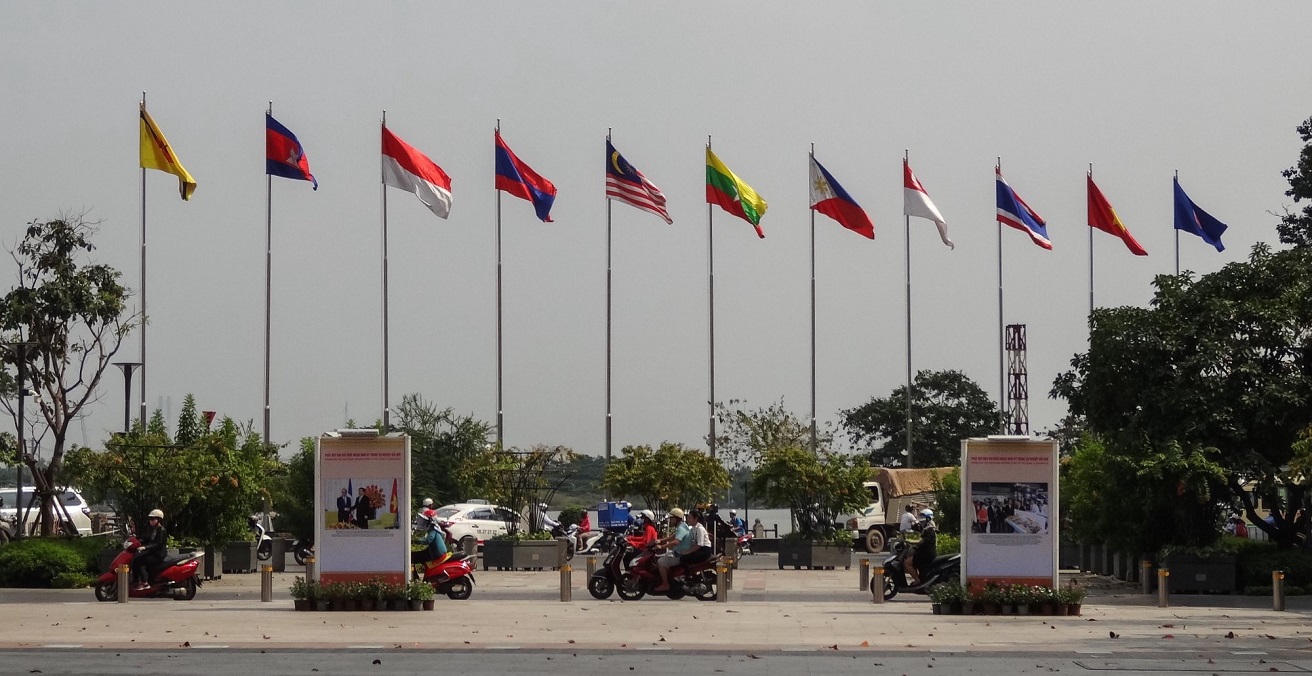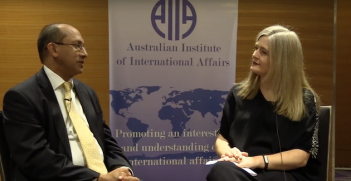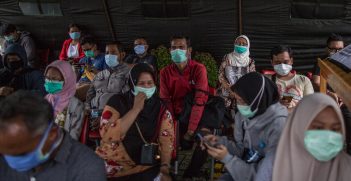Not-So-Free Trade in the Asia Pacific

In the Asia Pacific, free trade has facilitated economic rise. However, trade barriers, geopolitical rivalries, the COVID-19 pandemic, and regional inequality has hampered free trade.
Over the last 60 years, the Asia Pacific has grown from an agricultural economy to a factory for the world. It has also been described as the fastest-growing economic region on Earth by the United Nations. The region’s trade was expected to rise to all-time high levels in 2020, sending 41.8 percent of global exports and accepting 38.2 percent of imports. The World Bank forecasts economic growth in the Asia Pacific to continue by 2.5 percent in 2021. Free trade has facilitated this rise and will be pivotal in pushing economic growth in the future. But paradoxically, this rise has also led to barriers to free trade as well as inequality.
Since 2000, free trade agreements (FTAs) have proliferated in the Asia Pacific, bringing a steady decline in tariffs paid between bilateral and multilateral trading partners. In contrast, non-tariff measures have increased significantly, a trend seen within Association of Southeast Asian Nations (ASEAN) states and in the Asia Pacific more broadly. Non-tariff measures are trade barriers that can fulfil legitimate policy objectives, such as protecting public health, domestic trade, and environmental safety, but can also include a range of protectionist applications aimed directly at inhibiting imports. Non-tariff measures can include quarantine and biosecurity measures, regulations, licences, and certification standards. Other non-tariff measures can include border and administration fees, surcharges, and intellectual property costs.
Of the ten members of ASEAN, six applied non-tariff measures to 100 percent of their imports in 2015, with these measures making up 76 to 78 percent of trade costs and tariffs accounting for only two to three percent. Barriers to trade had an estimated value of 1.6 percent of global GDP in 2018, the equivalent of $1.4 trillion dollars. These hurdles have been significant for firms in major South-East Asian sectors such as automotive, agri-food, and seafood. The World Bank further outlined how these barriers disproportionately affected industries in food processing, textiles, and agriculture in the Asia Pacific broadly, and it has been estimated that trade within South Asia has the potential to increase from $23 billion to $67 billion if non-tariff measures were reduced. These costs can be significant barriers to trade, particularly for developing nations such as those in the Pacific who must also mitigate natural costs arising from geographical location, lower technological development, and security.
The proliferation of bilateral FTAs has further created a barrier to trade, known as the “noodle bowl problem” due to the large number of tangled and overlapping agreements. Bilateral agreements comprised 74 percent of all concluded FTAs in Asia in 2009. In contrast to multilateral trade, which enforces a single consistent set of trade rules, bilateral FTAs in the region can vary widely in their content and standards. The large number of such FTAs interconnecting the Asia Pacific undermines the cohesiveness of regional trading systems and imposes unnecessary costs.
FTAs in the Asia Pacific have also been criticised for their low quality, in that many agreements are between states with relatively low trade volumes and have a narrow coverage of trade sectors. These types of FTAS have been the majority, rather links with more important and valuable trading partners such as the United States or China. Interviews in 2009 with Asia Pacific firms also discovered that a significant number do not even utilise FTAs due to a lack of information, delays, and administrative costs.
Multilateral deals in the Asia Pacific have also been hampered by actions from other powers, such as the Trump administration pulling the US out of the Trans-Pacific Partnership (TPP) in 2017. If the TPP had continued to operate, trade tariffs for the majority of countries involved would have dropped to zero by 2030 and non-tariff measures would have declined. The GDP of Vietnam was projected to have tripled and Malaysia’s doubled. Other participants also lost potential growth. Geopolitical rivalries between the US and China have infected other multilateral FTA deals in the region, with Asia Pacific nations being forced to signal their allegiances by signing onto the TPP or the Regional Comprehensive Economic Partnership (RCEP).
The East Asia Free Trade Area represents another space for rivalry, in that FTAs must be concluded between China, Japan, and Korea separately or together before the larger deal can be made, with other signatories forced to wait for leadership jostles to conclude. Wealthier, developed nations also have more capacity for and potential to gain from free trade and liberalisation in the Asia Pacific, as opposed to benefits derived by developing states.
The impact of China’s territorial disputes in the South China Seas will significantly impact trade in the Asia Pacific if there is an escalation into conflict that blocks sea trade. The economy of Singapore is projected to fall by 22 percent as a result of such a trade disruption, with economies in Vietnam, Philippines, and Malaysia potentially contracting by 10-15 percent.
The effect of potential downturns in large Asia Pacific economies like China can further impact trade in the region. One example relates to the real estate and construction sectors in China, accounting for 29 percent of China’s GDP. China is responsible for 20 percent of the world’s imports of steel and copper. With the escalating Evergrande property crisis comes the threat that domestic economic woes in China could radiate throughout the region. The recent restrictions on Chinese domestic electricity represent another example, by which the reduction of output by China’s wool conversion factories of 40 percent and has led to economic ramifications in the Australian wool market.
The COVID-19 pandemic has had a further significant impact on trade in the Asia Pacific. Overall, the Asia Pacific lost $2.2 trillion in potential trade in 2020. Although economies rebounded in 2021, the region has seen its lowest growth rates since 1967, with supply chains and trade being significantly disrupted. Unemployment and underemployment have surged, and the Asia Pacific saw working hour losses totalling the equivalent of 140 million full-time jobs in 2020. Developing areas such as the Pacific have been hit particularly hard in what has been described as a potential lost decade for trade and economic growth. School closures represent a loss of potential human capital.
Trade liberalisation is one avenue to reduce non-tariff measures and other trade barriers in the Asia Pacific and to increase trade, and has already seen success in air liberalisation between Sri Lanka and India. A move towards multilateral FTAs will work to address the noodle bowl problem and the lack of standardisation evident in bilateral FTAs, as well as decreased tariffs and non-tariff measures. Multilateral approaches to aid and assistance will further bolster developing economies, assist in mitigating the effects of COVID-19 on trade and supply chains, facilitate rebounds in manufacturing potential and human capital, and alleviate social effects such as poverty.
Shaun Cameron is a postgraduate student in international relations at Curtin University. He is currently working in Asia, and has a background in academic research, teaching, and psychology.
This article is published under a Creative Commons Licence and may be republished with attribution.





